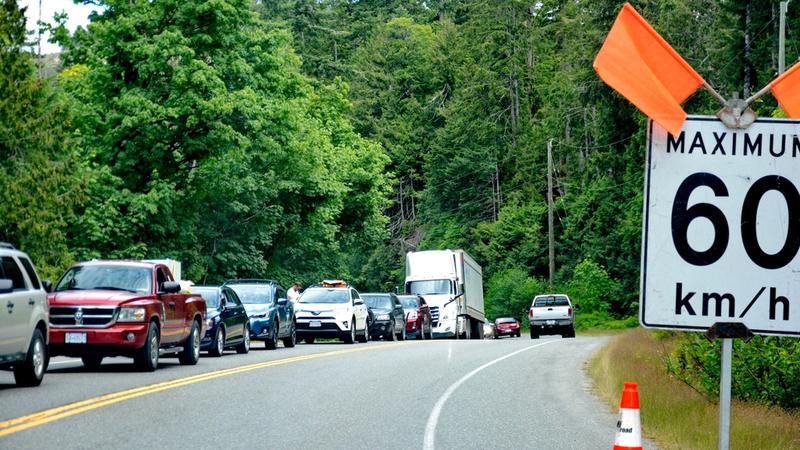Will your home insurance cover your accommodations and living expenses if you become displaced by an evacuation order? The answer is – it depends on your policy.
Most insurance policies include something called Additional Living Expenses (ALE), which covers your expenses when a covered peril forces you to temporarily move out of your home (similar to the Loss of Use coverage in auto insurance – except that it’s not an endorsement).
Mass evacuations typically fall under this, and as a result, are also limited to covered perils only. For instance, if your home is not covered for overland flooding (flooding caused by an overflowing river, stream, or lake), then your evacuation due to such an event may not be covered either. You can, however, expand your evacuation coverage by including additional perils on your policy, such as flooding, earthquakes and others.
With natural disasters becoming more prevalent in Canada, we’re likely to see more mass evacuation orders in the future. That’s why we recommend giving your home insurance policy another look to make sure you’re covered. Here’s some info to help you out:
What is a mass evacuation, exactly?
Mass evacuation is a government-mandated exodus from a particular area due to an impending natural or man-made disaster. Examples of such disasters include wildfires, floods, ice storms, nuclear incidents, and hazardous materials spills.
Wildfires in particular are a major threat in Canada because of their prevalence, with a study from World Weather Attribution claiming that the likelihood of extreme fire weather conditions has more than doubled in places like Eastern Canada. In 2023 alone, wildfires displaced close to 200,000 Canadians and burned over 18 million hectares of land – two and a half times the previous record, set in 1995.
How do mass evacuations play out?
The government of British Columbia has broken down the evacuation process into three basic steps:
- Evacuation alert: If the situation is worsening but isn’t life-threatening yet, the government will issue an evacuation alert. This indicates that you should be ready to leave the area at short notice. So, pack what you need for a few days away from your home and keep your eyes peeled for further updates. When packing, don’t forget your clothes, important documents, medication, and other indispensable items. We recommend putting together an emergency plan as well as an emergency kit ahead of time.
- Evacuation order: If the threat of an impending disaster becomes life-threatening, the government will issue an evacuation order, which means that you should leave your home immediately. Your ALE coverage will kick in at this point if you’re eligible.
- Evacuation rescinded: Once the threat to your life has passed, you will be notified that the evacuation order has been rescinded. If your home ends up damaged or lost due to the disaster and you incur additional living expenses, you can file a claim with your insurance company to receive a reimbursement.
Are you covered for mass evacuation?
If you have home insurance, then you are covered for mass evacuation. According to the Insurance Bureau of Canada (IBC), your ALE claim may be eligible if a civil authority has prohibited access to your home because of a mass evacuation order. Coverage usually starts on the date of the evacuation and ends after the number of days specified on your policy.
However, be sure to examine your policy before making any claims, as your evacuation-related expenses may not be reimbursed if the evacuation does not involve a covered peril. Overland flooding, for instance, is often excluded from most policies.
It’s worth noting that if a peril is covered, then you will receive coverage for it no matter what. There are no “acts of God” in Canadian home insurance policies. Whether the peril is caused by something in your home or something outside of it, such as wildfires, your additional living expenses will be covered – along with all the damages and losses. The only factor that can disqualify you from receiving coverage is if you damage your property yourself.
If you’re worried about wildfires specifically, then we’re happy to inform you that even the most basic home insurance policy should cover them.
Expenses covered during mass evacuations under ALE
Your ALE coverage will reimburse you for the following:
- Your lodgings (such as a hotel room)
- Your food (if the amount is more than what you usually spend)
- Your fuel/travel expenses (if the amount is more than what you usually spend)
Be aware that your insurer will not cover your living expenses forever. Your policy should specify the maximum number of days your coverage will last. It’s usually 14 days, but that may vary. Check your policy for details, and if you have any questions, chat with your insurance agent or broker.
When lodging, be sure to keep all your receipts and note the reason for each of purchase, so you can back up your claim with evidence. Speak with your adjuster to learn more about the timing and frequency of your reimbursement. In some cases, you may even get an advance on your ALE coverage.
How to qualify for mass evacuation coverage
To qualify for mass evacuation coverage, your evacuation order must be the result of a covered peril, such as fire, and must come from a civil authority, like your municipal or provincial government. You can claim your expenses only if you have evacuated your home.
If you feel that your current insurer’s ALE or mass evacuation coverage is inadequate, consider shopping around for a better price by comparing quotes online. You may be surprised by what you find.

